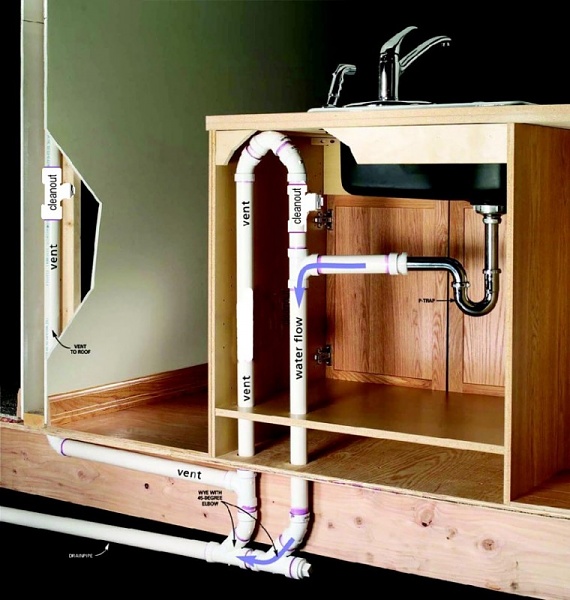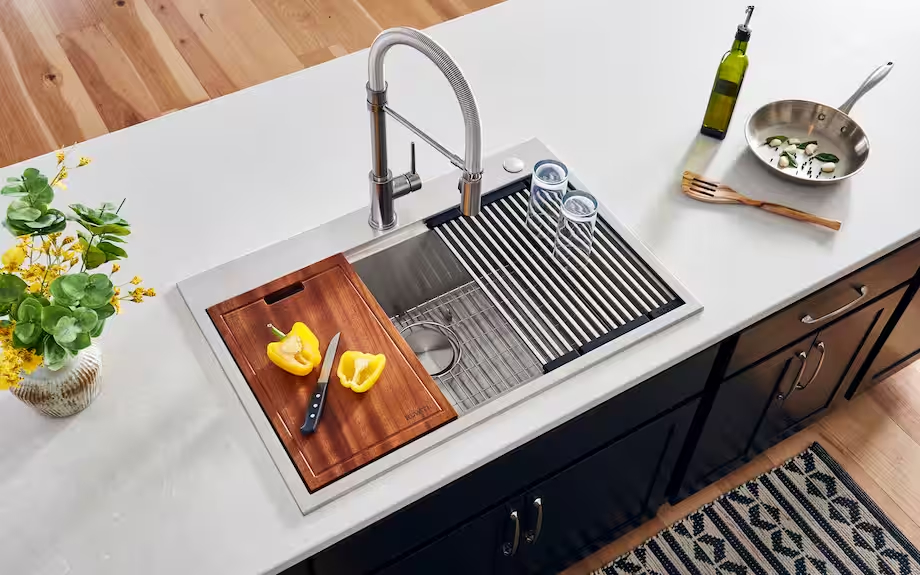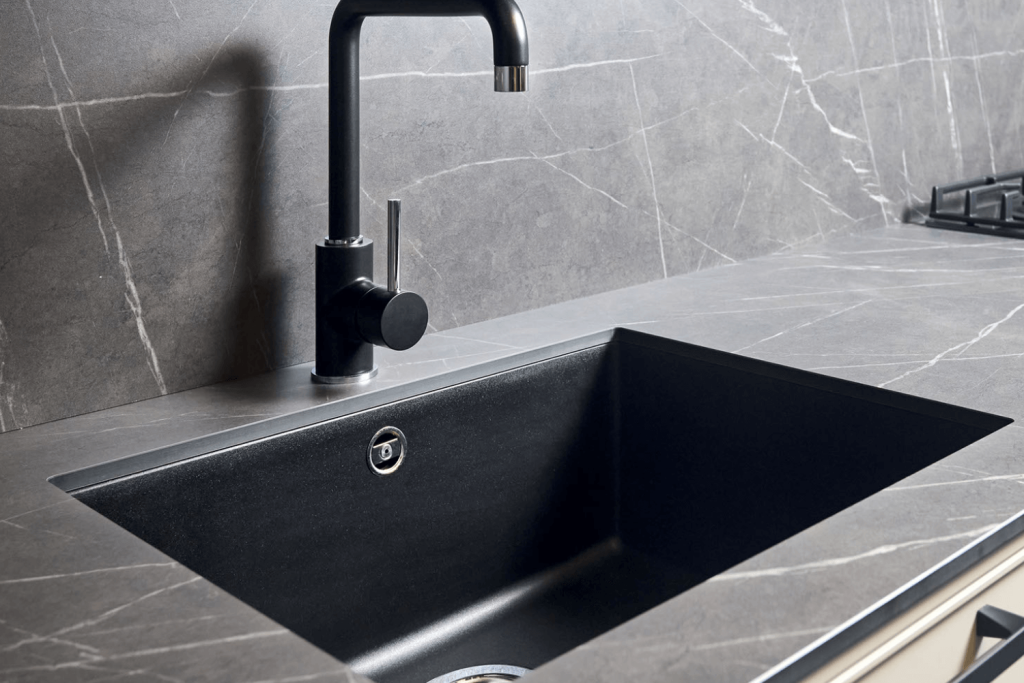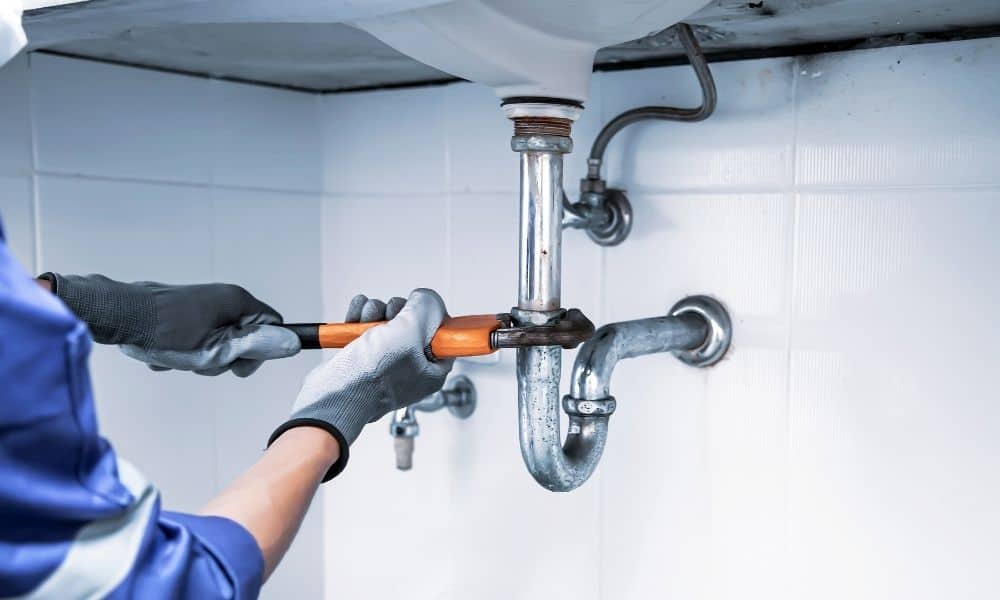Kitchen plumbing, when renovating a kitchen, one of the most crucial aspects to consider is the plumbing system. Proper kitchen plumbing ensures functionality, efficiency, and convenience in the heart of your home. Whether you’re updating an existing kitchen or starting from scratch, this comprehensive guide will walk you through the process of kitchen plumbing renovation. From sink installation and faucet upgrades to dishwasher connections and garbage disposal units, we will cover everything you need to know to create a well-designed and fully functional kitchen space.

Planning and Preparation:
Before diving into kitchen plumbing renovation, thorough planning and preparation are essential. Consider the following steps:
-
- Assess Existing Plumbing: Evaluate the current plumbing layout to determine if any changes or upgrades are needed. Identify the location of water supply lines, drain pipes, and vent pipes.
- Create a Layout Plan: Design a detailed layout plan that includes the placement of the sink, dishwasher, garbage disposal, and any additional fixtures. Consider the flow of water and ease of access in the kitchen.
- Choose Fixtures and Appliances: Select high-quality fixtures such as sinks, faucets, and appliances that fit your design aesthetic and meet your functional requirements. Consider energy-efficient and water-saving options for sustainability.
Sink Installation:
The kitchen sink is a central fixture that requires careful installation to ensure proper functionality. Follow these steps for sink installation:
-
- Cutout and Mounting: Measure and cut out the countertop for the sink opening. Install the sink by securing it with clips or brackets provided. Seal the edges with silicone caulk to prevent leaks.
- Connect Water Supply Lines: Install shut-off valves under the sink and connect the hot and cold water supply lines to the faucet. Use flexible braided hoses for easy installation.
- Install Drain Assembly: Assemble the sink drain components including the strainer, tailpiece, and P-trap. Ensure a proper slope for drainage and secure all connections tightly.
Faucet Upgrades:
Upgrading the kitchen faucet can enhance both the functionality and aesthetics of the space. Follow these steps for faucet installation:
-
- Remove Existing Faucet: Turn off the water supply, disconnect the old faucet, and clean the area around the sink hole.
- Install New Faucet: Insert the new faucet through the sink hole and secure it with the mounting hardware provided. Connect the water supply lines and check for leaks.
- Test Functionality: Turn on the water supply and test the faucet for proper flow and temperature control. Make any necessary adjustments to ensure smooth operation.

Dishwasher Connections:
Connecting a dishwasher to the kitchen plumbing system requires careful consideration and proper installation. Follow these steps for dishwasher connections:
-
- Locate Drain Line: Identify the location of the dishwasher drain line and connect it to the kitchen sink drain using a high loop or air gap to prevent backflow.
- Connect Water Supply: Install a dedicated water supply line for the dishwasher and connect it to the hot water line under the sink. Use a compression fitting or dishwasher connector for a secure connection.
- Test Operation: Run a test cycle to ensure the dishwasher fills and drains properly without any leaks or issues. Adjust the connections if needed for optimal performance.
Garbage Disposal Installation:
A garbage disposal unit can streamline kitchen cleanup and waste management. Follow these steps for garbage disposal installation:
-
- Mount Disposal Unit: Install the garbage disposal unit under the kitchen sink according to the manufacturer’s instructions. Secure it with the mounting ring and attach the drain pipe.
- Connect Power Supply: If the garbage disposal requires electrical power, connect it to a dedicated outlet or hardwire it according to local codes and regulations.
- Test Functionality: Run water and food waste through the disposal unit to test its grinding capabilities and ensure proper drainage. Check for any leaks or unusual noises.

Ventilation and Odor Control:
Proper ventilation is essential in a kitchen to remove odors, moisture, and cooking fumes. Consider the following ventilation options:
-
- Range Hood: Install a range hood above the cooktop or range to capture smoke, steam, and odors during cooking. Choose a hood with adequate airflow capacity for your kitchen size.
- Ventilation Fan: Install a ventilation fan or exhaust fan near the stove or cooking area to improve air circulation and remove excess heat and humidity.
- Natural Ventilation: Enhance natural ventilation by installing operable windows or skylights to allow fresh air to enter the kitchen and create a comfortable environment.
Maintenance and Troubleshooting:
After completing the kitchen plumbing renovation, regular maintenance and troubleshooting are essential to ensure optimal performance. Consider the following tips:
-
- Check for Leaks: Regularly inspect under-sink plumbing connections, faucet seals, and dishwasher hoses for any signs of leaks or water damage.
- Clean Drains: Prevent clogs and blockages by regularly cleaning sink drains, garbage disposal unit, and dishwasher filters.
- Address Issues Promptly: If you encounter any plumbing issues such as slow drainage, low water pressure, or unusual noises, address them promptly to prevent further damage and ensure efficient operation.

kitchen plumbing precautions
Before embarking on a kitchen plumbing project, thorough planning is crucial. Consider the following key points during the planning phase:
- Assess Current Plumbing: Evaluate the existing plumbing layout to identify any issues or areas that require modification.
- Layout Design: Create a detailed layout plan that includes the placement of sinks, appliances, and fixtures for optimal functionality.
- Fixture Selection: Choose high-quality fixtures that align with your design preferences while ensuring durability and efficiency.
The kitchen sink is a central fixture that requires careful installation. Consider the following when installing a kitchen sink:
- Proper Measurement: Accurate measurement of the countertop for the sink cutout is crucial for a seamless installation process.
- Water Supply Connections: Ensure secure connections for both hot and cold water supply lines to the faucet.
- Drainage System: Install the drain assembly correctly, maintaining proper slope for effective drainage.

Conclusion:
Renovating the kitchen plumbing is a critical aspect of creating a functional and efficient workspace in your home. By carefully planning the layout, selecting quality fixtures and appliances, and following proper installation techniques, you can achieve a well-designed kitchen that meets your needs and enhances your daily cooking experience. Whether you’re installing a new sink, upgrading the faucet, connecting a dishwasher, or installing a garbage disposal unit, each step contributes to the overall functionality and convenience of your kitchen space. With attention to detail and regular maintenance, your renovated kitchen plumbing system will serve you well for years to come. Installing a time lock in the kitchen can make your kitchen safer.